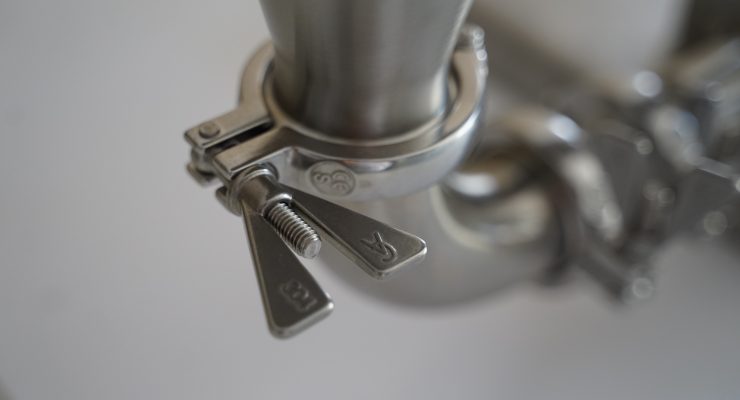Why Machine Design Matters: Strip-Down and Cleaning Time
Posted
Optimising Design to Reduce Strip-Down and Cleaning Time
In industries dealing with liquids – be they runny fluids or viscous pastes – minimising downtime for strip-down and cleaning is crucial.
The design of the equipment plays a significant role in this process. By focusing on key factors such as reducing the number of fluid contact parts, designing for efficient cleaning, and implementing effective waste management practices, companies can significantly improve efficiency, reduce costs, and minimize environmental impact.
- Minimising Fluid Contact Parts
The fewer the number of parts in contact with the fluid, the less there is to clean. This is particularly important for moving parts that are directly in contact with fluids. Minimising such parts not only reduces the complexity of cleaning but also helps prevent wear and tear (especially when the fluids contain abrasive partials).
Design solutions such as quick-knock-down designs allow for easy disassembly, enabling fast and effective cleaning after each operation. Simple, streamlined designs with fewer contact points make cleaning processes much quicker and more effective.
- Shape and Surface Finish of Fluid Contact Parts
The shape and surface finish of components that come into contact with fluids are essential in reducing cleaning time. Smooth surfaces with fewer crevices and sharp angles are easier to clean and less likely to trap materials. Special attention should be given to areas where fluids can accumulate, such as joints, seals, and valves. Properly polished and smooth surfaces reduce the likelihood of paste or viscous liquids adhering to the equipment, making cleaning easier and more efficient.
- Cleaning Dense and Sticky Pastes
Handling dense, sticky pastes presents unique challenges when it comes to cleaning. The key to an efficient cleaning regime lies in the machine’s design and mechanical features that assist in expelling as much material as possible, reducing the amount left behind.
Utilising tools like spatulas to remove material from surfaces can be highly effective.
In addition to expelling material, keeping waste streams separate plays an important role. Minimising the mixing of the paste/slurries with the cleaning liquids greatly simplifies waste disposal. By maintaining separate waste streams, the need for further filtration or separation processes can be eliminated, reducing overall waste management costs and improving environmental sustainability.
When it comes to final cleaning and wiping/washing down the machine components – reducing any remaining residues not only minimizes waste but also helps reduce the consumption of cleaning fluids (whether they be chemical or water-based) and helps reduce the generation of waste wash.
- Cleaning Liquid Residues
Liquid residues presents a different challenge. The design of the machine should facilitate the expulsion and drainage of as much liquid as possible. Once the majority of liquid is drained, final cleaning steps should focus on ensuring that no residue remains behind. This may include wipe-down or washdown procedures depending on the liquids being handled.
- Tailoring Cleaning Regimes to Specific Products and Waste Management Needs
Cleaning regimes will vary depending on the products being handled, the available cleaning equipment, and the waste management infrastructure in place. While the specific requirements may differ, there are key principles that can guide effective system design – by minimising fluid contact parts and designing for easy, efficient cleaning, companies can significantly reduce cleaning times and waste generation.
- Conclusion
In conclusion, reducing strip-down and cleaning time is a critical element of efficient machine design in industries handling fluids. Key principles include minimising fluid contact parts, designing for easy disassembly, having smooth surface finishes, and implementing effective cleaning regimes. For dense and sticky pastes, ensuring maximum expulsion of material, utilising appropriate tools, and managing waste streams are essential. A well-designed cleaning system not only saves time and labour but also contributes to sustainability by reducing cleaning fluid usage and waste. By keeping these principles in mind, businesses can achieve a successful, effective, and environmentally friendly system.

